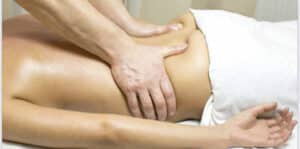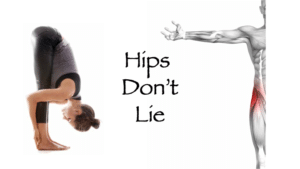“Soft tissue” is a vague term that can mean just about any tissue in our bodies. We think of bone as a hard tissue because we see dried dead bones, but in living things even bone is mostly soft tissue. More often, however, soft tissue refers to muscles and connective tissues like tendons, ligaments and fascia. Soft tissue repair process has three stages. They have different characteristics, but merge in with each other. Different tissues may progress at different speeds, and so some injuries may be at several different stages at the same time.
- “Inflammatory” (or “Acute“) Stage
- “Regeneration“, “Proliferation” (or “Post-Acute“) Stage
- “Remodelling” Stage
The Inflammatory Stage after Injury
The Inflammatory Stage commences at injury. Blood clots form to dam any breaks in the body, stopping fluid leakage and infection entry. The fibrin cobweb created becomes a structure, on which collagen and other fibres build in a random fashion. This randomness can develop unhelpful adhesions if allowed to grow unchecked. It is beneficial to get over this stage as quickly as possible.
Mast cells and other cells in the damaged tissue release histamine and other inflammatory chemicals such as prostaglandins. These make arterioles nearby vasodilate, bringing blood to the area. This is displayed as redness in the area when superficial. Capillaries “fenestrate”, becoming holed like colanders, allowing more fluid into the interstitial space, causing local swelling and stiffness, reducing mobility and inhibiting the spread of infection. Neutrophil and Monocyte white blood cells are attracted and migrate from the capillaries into the area, mopping up debris, infection and damaged cells. Extra nourishment is brought with the fluid, to help repair.
The objective of this first stage is to prevent the spread of any infection, and clear debris for regeneration.
Treatment
Treatment should be conservative, because the key risk is further damage to weakened structures. The aim is to assist a quick finish to the inflammatory stage, reduce extra blood clotting and to avoid a build up of unhelpful fibrous adhesions clogging the area. If there is any suggestion that the damage requires medical assistance, it should be considered a possible fracture and be immobilised until professional healthcare is provided.
First Aiders are taught the acronym “R.I.C.E.” to define treatment at this stage: protect the area, then give comparative Rest, Ice, Compression and Elevation.
Source: First Aid Manual (2009) 9th Edition from St John Ambulance, St Andrews Ambulance Association, British Red Cross.
Treatment should help lymphatic drainage, which can be inhibited by any swelling. Compression and elevation of the injured area higher than the heart can help this, as will Ice wrapped in a damp tea towel (up to 5 minutes on, 20 minutes off). Comparative rest (or rather, movement within a pain free range) reduces the risk of further damage. Gentle movement may reduce the risk of scar tissue formation.
Massage after injury during the Inflammatory stage
Any massage should have the objective of supporting conservative treatment. Gentle lymphatic drainage (e.g. Effleurage) proximal to the injury and other de-stressing moves may help, but manipulation and pressure directly, or distally to the affected area is contra-indicated. Every professionally trained massage therapist should know this. It is not uncommon for people to feel distress after injury, and any massage should aim to promote a sense of calm and wellbeing. Some people find it also helps with pain management, but this may be a result of the calming influence.
Regeneration, Proliferation (or “sub-Acute”) Stage
After about 24 hours – 6 days (depending on the scale of injury and tissues affected), regeneration takes over. The fibrin clots produced by bleeding in the area form a framework for fibrocytes to randomly lay down collagen and elastin fibres. With gentle movements, scar tissue adhesions are broken down and there is a gradual build up of helpful structures with increased tensile strength along lines of stress.
Patients should consider cautiously and gradually increased activity – maybe in a different sport to the one causing the injury (so as not to stress the injured areas). Regeneration involves timescales of weeks, dependent on the structures involved. Muscle regenerates quickly because of good blood supply, but ligaments can take far longer. More extensive injuries and the repair after surgery can take months.
Treatment during Proliferation Stage
The injured site may be progressively mobilised in an attempt to encourage blood flow and the break down unhelpful scar tissue – so long as pain is avoided for more than 30 seconds after activity ceases (or revert to “R.I.C.E.” protocol for 48 hours).
Source of advice is Sports Injuries (1997) 2nd edition, by Malcolm Read with Paul Wade and Sports Injuries (2001) by Lars Peterson & Per Renström.
Massage after Injury during Proliferation stage
Massage can be indicated to support progressive mobilisation and resistance training. Post exercise it may help relaxation of muscles. Petrissage, gentle passive STR, RI MET may be indicated. Promoting calm and a greater sense of wellbeing is particularly important at this stage. A positive attitude may help keep the patient focussed on recovery.
Source of advice for this treatment: Sports & Remedial Massage Therapy by Mel Cash (1996) and Clinical Massage Therapy by Fiona Rattray & Linda Ludwig (2000).
Remodelling Stage
Over a process of months, tissue builds up and repairs. The scar tissue may reduce, but is unlikely to disappear altogether. For surgery and soft tissue associated with fractures, remedial remodelling should be considered to take up to 2 years.
Treatment
Remodelling of tissues can be supported by a gentle return to the activity that caused the injury, with proprioceptive exercises to rebuild nerves and muscle damaged or wasted in the reduced activity following the damage.
Exercise involves returning to the sport and activity that caused the injury, monitoring progress to ensure fresh injury does not reoccur (re-spraining an ankle is very common, especially if proper proprioceptive exercises are not included in the programme; these exercises will aim to improve balance and nerve response).
Source of advice is Sports Injuries (1997) 2nd edition, by Malcolm Read with Paul Wade and Sports Injuries (2001) by Lars Peterson & Per Renström.
Massage after Injury during Remodelling Stage
More intense treatments are indicated to break unhelpful fibrous adhesions and scar tissue that restrict mobility, especially after forced inactivity (eg. Fracture). STR and deep friction are indicated to break up scar tissue, with MET to lengthen shortened structures. Stronger massage will encourage blood flow, to improve the remodelling process.
Source of advice for this treatment: Sports & Remedial Massage Therapy by Mel Cash (1996) and Clinical Massage Therapy by Fiona Rattray & Linda Ludwig (2000).
Conclusion
Most people think injury repair is complete when the swelling has gone down and the soreness ceases, however this is just the completion of the first stage. For a proper recovery from a soft-tissue injury, the patient must be involved in a project of good nourishment, graduated exercise and rest. Massage treatments should aim to support good healing and recovery of use of nerves and muscles as well as encourage a greater sense of wellbeing.
The source for information on the repair process comes from Human Anatomy & Physiology by Elaine N. Marieb (2004) 6th Edition.






